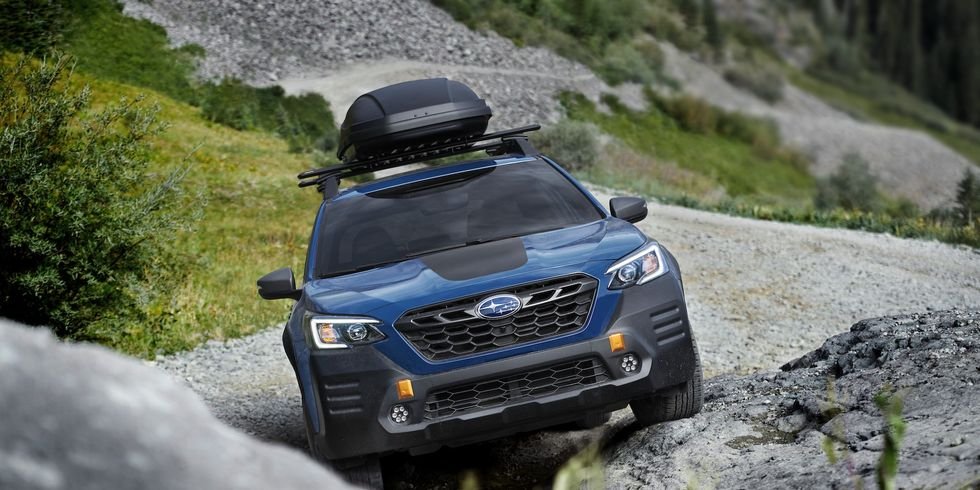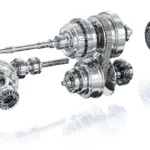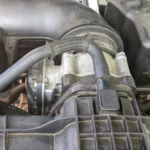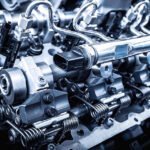
2010 Outback Overheating Problems
Introduction to Overheating Issues in Subaru Outback
Overheating is a common and significant issue faced by owners of the 2010 Subaru Outback. This problem may arise unexpectedly, and understanding the underlying causes is crucial for maintaining the vehicle’s performance and longevity. Not addressing overheating promptly can lead to severe engine damage, which may result in costly repairs or even total engine failure. Therefore, it is essential for Subaru Outback owners to recognize the signs of overheating and take immediate action when symptoms arise.
Typical indicators of overheating in a 2010 Subaru Outback include unusual temperature gauge readings, which may show higher than normal levels while driving. Additionally, warning lights on the dashboard, such as the engine temperature warning or check engine light, can appear as the vehicle’s cooling system struggles to manage engine heat. Other symptoms may manifest in unusual smells, such as burnt oil or coolant odors, which can suggest that fluids are leaking or burning due to excessive heat.
It is also important to consider external factors that may contribute to overheating issues, such as driving conditions, weather, and maintenance history. For instance, heavy loads, uphill driving, or high temperatures can exacerbate the heat generated by the engine, while inadequate coolant levels or a malfunctioning thermostat can prevent effective heat dissipation. Regular maintenance, including fluid checks and radiator inspections, is vital in preventing overheating problems from developing. By promptly addressing these concerns, Subaru Outback owners can ensure the vehicle operates smoothly and efficiently without the risk of overheating. In conclusion, being vigilant about overheating symptoms and understanding their implications is essential for all Subaru Outback owners.
Understanding the Cooling System
The cooling system in a 2010 Subaru Outback is a vital component designed to regulate the engine’s temperature, preventing overheating and allowing for optimal performance. This system comprises several interrelated parts, including the radiator, thermostat, water pump, and hoses, each playing a crucial role in maintaining an appropriate engine temperature.
The radiator is one of the primary components within the cooling system. It functions by dissipating heat from the engine coolant that has absorbed heat during its passage through the engine block. As the coolant flows through the radiator, air passing over the radiator fins cools it down before it is recirculated back into the engine. A blocked or damaged radiator can significantly hinder this heat dissipation process, leading to potential overheating.
The thermostat acts as a temperature regulation valve. It opens and closes to control the flow of coolant to the radiator based on the engine’s temperature. If the thermostat is stuck in a closed position, coolant cannot flow to the radiator for cooling, resulting in increased engine temperatures. Regular checks can help identify thermostat failure, which is a common point of failure in cooling systems.
The water pump is responsible for circulating coolant throughout the engine and the cooling system. A malfunctioning water pump can cause insufficient coolant flow, leading to localized heating. This can exacerbate the risk of overheating. Hoses connecting these components are equally critical; they can develop leaks or become worn over time, allowing coolant to escape and leading to a drop in the system’s efficiency.
In summary, understanding each component of the Subaru Outback’s cooling system, including the radiator, thermostat, water pump, and hoses, is essential for diagnosing and resolving overheating problems effectively. Being aware of the common failure points in these parts will provide car owners with the necessary knowledge to maintain their vehicle’s cooling system and avoid potential issues related to overheating.
Identifying Symptoms of Overheating
Understanding the symptoms of overheating is crucial for any Subaru Outback owner, particularly for models from 2010. These symptoms can manifest in various forms, providing critical signals that your vehicle requires immediate attention. One of the most evident visual signs of overheating is the presence of steam rising from the engine compartment. This steam is typically the result of coolant boiling over due to excessive heat, indicating that your vehicle is experiencing a significant thermal issue.
In addition to steam, look for coolant leaks around the engine area. A puddle of coolant under your car is a clear indication that a leak exists, which can greatly contribute to overheating issues. The coolant system is essential for regulating engine temperature, and any leak can compromise its effectiveness. Therefore, checking for visible leaks and ensuring that the coolant level remains adequate is imperative.
Audible warnings can also be indicators of overheating problems. Strange noises—such as hissing or bubbling sounds from the engine—may suggest that coolant is boiling or escaping from the system. This not only confirms a potential overheating situation but also signals that further investigation is required to prevent engine damage.
Furthermore, dashboard indicators play a significant role in identifying overheating conditions. If your Subaru’s check engine light illuminates, or if the temperature gauge shows the engine temperature exceeding normal levels, it is essential to take these alerts seriously. These warning signs provide crucial information about the vehicle’s health and can help prevent serious mechanical failures if addressed promptly.
Overall, by being vigilant and observing these symptoms, Subaru Outback owners can take proactive measures to address overheating problems before they escalate into more significant issues.
Tools and Equipment Needed for Diagnosis and Repair
To effectively diagnose and address overheating problems in a 2010 Subaru Outback, having the right tools and equipment is essential. This ensures that troubleshooting is efficient and that any repairs made are accurate and long-lasting. Below is a comprehensive list of tools that are crucial in tackling this issue.
Firstly, a coolant pressure tester is vital for assessing the system’s integrity. This tool allows you to pressurize the cooling system and identify potential leaks in components such as hoses, gaskets, or the radiator itself. Any pressure loss detected indicates where coolant may be escaping, which is essential information for resolving overheating concerns.
Next, a set of basic hand tools is necessary to facilitate access to various engine components. This typically includes wrenches, pliers, and screwdrivers, which are indispensable for removing engine covers, radiator caps, and other parts that may impede access to the cooling system. Additionally, a high-quality ratchet set can help streamline the process of loosening and tightening bolts.
Furthermore, a diagnostic scanner is an invaluable tool when it comes to modern vehicle troubleshooting. This device can read error codes from the engine control unit (ECU) that pertain to the cooling system, such as thermostat or sensor failures. Understanding these codes equips you with crucial insights into the underlying issues contributing to overheating.
Lastly, a thermometer or infrared thermometer can be employed to monitor the temperatures of various engine components during operation. This can help in identifying which parts may be overheating and require attention. Having these tools readily available enhances the troubleshooting process and ensures a comprehensive approach to solving overheating problems in a 2010 Subaru Outback.
Step 1: Checking Coolant Levels and Condition
To effectively diagnose overheating problems in a 2010 Subaru Outback, the first step is checking the coolant levels and inspecting the condition of the coolant itself. Coolant plays a crucial role in regulating engine temperature, and if it is low or contaminated, it can lead to severe overheating issues. Begin by ensuring the engine is cool to prevent any risk of burns or injuries. Once it has cooled down, locate the coolant reservoir, typically found near the front of the engine bay. The reservoir is often made of translucent plastic, allowing for easy visibility of coolant levels.
Examine the coolant level against the marked indicators on the side of the reservoir. Ideally, the coolant should be between the ‘low’ and ‘high’ marks. If the level is below the ‘low’ mark, you will need to add coolant. It is important to use the recommended type of coolant as specified in your Subaru owner’s manual—usually a mix of antifreeze and water in a 50/50 ratio. Use a funnel to pour the coolant slowly, checking for any leaks around the reservoir and hoses. If the coolant is excessively low, it may indicate a leak in the system that should be investigated further.
After confirming the level, take a moment to inspect the coolant’s condition. Look for any discoloration, debris, or a muddy appearance, which can indicate contamination or degradation. Healthy coolant should be a bright color, such as green or orange, depending on the type used. If the coolant appears rusty or has a foul odor, it may be time for a complete coolant flush and replacement. Addressing coolant issues early can prevent overheating and protect the engine from damage. Ensuring proper coolant levels and quality is essential in maintaining the overall health of your Subaru Outback’s cooling system.
Step 2: Inspecting for Leaks and Damage
To effectively address overheating issues in a 2010 Subaru Outback, it is essential to conduct a meticulous visual inspection of the cooling system for any signs of leaks and damage. Begin this process by carefully examining all hoses connected to the radiator and the engine. Look for cracks, bulges, or any sign of wear that may indicate potential failure. Pay particular attention to the hose clamps, as these can loosen over time, leading to fluid loss.
Next, inspect the radiator for any visible damage. Look for cracks, corrosion, or any other structural imperfections that could compromise its functionality. A well-maintained radiator is crucial for the efficient operation of the cooling system, as it plays a vital role in dissipating engine heat. If any damage is noticeable, consider replacing the radiator to ensure optimal performance.
Moreover, determining the presence of leaks in the cooling system can be challenging, especially when they are not easily visible. To facilitate this process, employing a coolant pressure tester can be an invaluable tool. This device allows you to pressurize the cooling system, thereby revealing any hidden leaks that may not be apparent during a visual inspection. Follow the manufacturer’s instructions on how to connect the tester to the radiator cap and pressurize the system slightly above its normal operating pressure. Carefully monitor for any signs of coolant escaping or dripping from the hoses, joints, and the radiator itself.
Also, inspect the water pump and thermostat housing, as these areas are notable for potential leaks. Any indication of coolant pooling near these components may require further investigation or replacement. By thoroughly inspecting for leaks and damage, you will be well on your way to resolving the overheating problems in your Subaru Outback.
Step 3: Testing the Thermostat
Testing the thermostat is a crucial step in diagnosing and resolving overheating problems in your 2010 Subaru Outback. The thermostat controls the flow of coolant into the engine, and a malfunction can lead to inadequate engine cooling. The first step involves safely removing the thermostat from the vehicle. Begin by ensuring the engine is cool and disconnecting the battery to avoid any electrical issues. You will need to locate the thermostat housing, which is typically situated near the engine block. Remove the hoses connected to the thermostat housing, and then unscrew the bolts to detach the housing. Carefully lift out the thermostat, taking care not to damage any surrounding components.
Once the thermostat has been removed, you will need to test it to determine if it is functioning correctly. A simple yet effective method involves using hot water. Fill a pot with water and bring it to a boil. Using tongs, carefully submerge the thermostat into the boiling water. Observe the thermostat; it should open fully when the water temperature reaches around 190°F to 200°F (approximately 88°C to 93°C), which is the normal operating temperature for most engines. If the thermostat does not open, or if it is stuck open, this indicates that it is malfunctioning and requires replacement.
Before installation of the new thermostat, it is essential to clean the mating surfaces of the thermostat housing and engine block to ensure a proper seal. When replacing the thermostat, pay attention to the orientation; it should be positioned exactly as the old one was. Once installed, reattach the hoses and bolts securely. Reconnect the battery, refill the cooling system with coolant, and start the engine to check for leaks and ensure proper operation. This systematic approach to testing and replacing the thermostat can help prevent further overheating issues in your Subaru Outback.
Evaluating the Water Pump
The water pump plays a crucial role in the cooling system of the 2010 Subaru Outback. It is responsible for circulating coolant throughout the engine and radiator, ensuring that the engine maintains an optimal temperature range. Therefore, assessing the water pump’s performance is a vital step in diagnosing overheating issues.
One of the initial signs of a failing water pump is the presence of leaks around the pump area. If coolant is pooling beneath the vehicle or if you notice any wet spots around the water pump, it may indicate that the pump’s seal has deteriorated. Additionally, any obvious signs of corrosion on the water pump may suggest it is nearing the end of its service life. Listening for unusual noises can also provide critical insights into the pump’s condition. A grinding or squeaking sound may indicate that the bearing within the pump is failing.
To evaluate the water pump effectively, begin by visually inspecting the pump for any signs of leaks, corrosion, or abnormal wear. Next, start the engine and listen for any unusual noises that might arise from the pump’s area. If the water pump appears to be malfunctioning or if there are clear signs of leakage, replacing it may be necessary to prevent further overheating issues.
When replacing the water pump, it is also prudent to consider the timing belt. In many cases, the water pump and timing belt are located within the same area and may need to be removed for access. It is generally recommended to replace the timing belt simultaneously to avoid future complications and to ensure that both components are in optimal condition. Regular maintenance of both the water pump and the timing belt can enhance engine performance and prevent overheating problems.
Conclusion and Tips for Preventative Maintenance
Addressing overheating issues in a 2010 Subaru Outback involves several critical steps that owners should be familiar with. First, it is essential to regularly inspect the coolant levels and ensure that the cooling system is functioning correctly. If any signs of leaks or damage are detected, they should be addressed immediately to prevent further complications. Furthermore, conducting a thorough check of the radiator, thermostat, and hoses can help identify potential failures before they lead to severe overheating issues.
To maintain the vehicle’s reliability and minimize the risk of overheating, adhering to a preventative maintenance schedule is highly recommended. Routine coolant flushes are an integral part of this process, as they help to remove debris and contaminants that can obstruct the cooling system’s efficiency. It is advisable to follow the manufacturer’s recommended intervals for coolant replacement to ensure optimal performance. Regular monitoring of coolant quality and levels can aid in detecting problems early on, as well.
Additionally, vehicle owners should remain vigilant for signs that indicate the need for professional assistance. These signs may include a sudden rise in temperature gauge readings, unusual odors, or steam coming from the engine bay. Ignoring these indicators can lead to significant engine damage and costly repairs. Ultimately, prioritizing proactive maintenance will not only enhance the longevity of the Subaru Outback but will also ensure a safer driving experience.
In summary, by following these outlined steps and tips, Subaru owners can effectively manage and prevent overheating issues, ensuring their vehicles remain in optimal condition for years to come.




